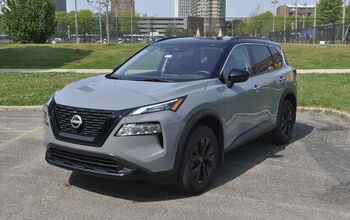Ohio Supreme Court Upholds Speeding Ticket By Visual Guess
In a 5-1 decision yesterday, Ohio’s Supreme Court upheld a speeding ticket based solely on how fast a driver appeared to be moving. The court considered the case of motorist Mark Jenney who drove through a State Route 21 radar speed trap operated by Copley police officer Christopher R Santimarino on July 3, 2008. Santimarino guessed based on the appearance of Jenney’s black SUV that it was traveling at 79 MPH in a 60 zone.
Santimarino claimed that his thirteen years as a traffic cop and his certification in speed estimation by the Ohio Peace Officer Training Academy qualified him to make expert visual determinations of how fast vehicles are moving within 4 MPH. In court, Santimarino testified that his radar showed Jenney was traveling at 82 MPH on direct examination and 83 MPH on cross-examination.
Based on this, a district court convicted Jenney. On appeal, Jenney succeeded in having the radar evidence thrown out because the officer failed to produce the required certification documents at trial. The appeals court then ruled that the visual guess as to Jenney’s speed was sufficient evidence for a conviction. Jenney appealed to the supreme court, which agreed with the lower court rulings that an officer’s educated guess is sufficient to overcome that state’s burden of proof beyond a reasonable doubt.
“A majority of the appellate districts that have considered the issue have held that an officer’s testimony that in his opinion, a defendant was traveling in excess of the speed limit is sufficient to sustain a conviction for speeding,” Justice Maureen O’Connor wrote for the majority. “Given Santimarino’s training, OPOTA certification, and experience in visually estimating vehicle speed, his estimation that Jenney was traveling 70 miles per hour was sufficient to support Jenney’s conviction… We hold that a police officer’s unaided visual estimation of a vehicle’s speed is sufficient evidence to support a conviction for speeding in violation of R.C. 4511.21(D) without independent verification of the vehicle’s speed if the officer is trained, is certified by the Ohio Peace Officer Training Academy or a similar organization that develops and implements training programs to meet the needs of law enforcement professionals and the communities they serve, and is experienced in visually estimating vehicle speed.”
Justice Terrence O’Donnell filed a dissent that argued the majority essentially created a standard that the police officer is always right.
“Like any other witness, a police officer’s credibility is to be determined by the jury or other fact-finder,” O’Donnell wrote. “In fact, jury instructions given regularly by trial judges advise that a jury is privileged to believe all, part, or none of the testimony of any witness. Thus, I would assert that a broad standard as postulated by the majority that a trained, certified, and experienced officer’s estimate of speed is sufficient evidence to support a conviction for speeding eclipses the role of the fact-finder to reject such testimony and thus such testimony, if found not to be credible, could, in some instances, be insufficient to support a conviction.”
A copy of the decision is available in a 50k PDF file at the source link below.
Barberton v. Jenney (Supreme Court, State of Ohio, 6/3/2010)
[Courtesy: Thenewspaper.com]
More by The Newspaper
Latest Car Reviews
Read moreLatest Product Reviews
Read moreRecent Comments
- Analoggrotto *What's the most famous track you have driven on while Hyundai foots the bill?
- 2ACL I'm pretty sure you've done at least one tC for UCOTD, Tim. I want to say that you've also done a first-gen xB. . .It's my idea of an urban trucklet, though the 2.4 is a potential oil burner. Would been interested in learning why it was totaled and why someone decided to save it.
- Akear You know I meant stock. Don't type when driving.
- JMII I may just be one person my wife's next vehicle (in 1 or 2 years) will likely be an EV. My brother just got a Tesla Model Y that he describes as a perfectly suitable "appliance". And before lumping us into some category take note I daily drive a 6.2l V8 manual RWD vehicle and my brother's other vehicles are two Porsches, one of which is a dedicated track car. I use the best tool for the job, and for most driving tasks an EV would checks all the boxes. Of course I'm not trying to tow my boat or drive two states away using one because that wouldn't be a good fit for the technology.
- Dwford What has the Stellantis merger done for the US market? Nothing. All we've gotten is the zero effort badge job Dodge Hornet, and the final death of the remaining passenger cars. I had expected we'd get Dodge and Chrysler versions of the Peugeots by now, especially since Peugeot was planning on returning to the US, so they must have been doing some engineering for it


































Comments
Join the conversation
This is nothing new, cops have been estimating speed for years. On the other hand, the radar had him at 82, and +20 over could get you a reckless driving ticket in some states.
Aren't conservatives the ones railing against activist judges who legislate from the bench instead of interpret existing law? I haven't read the opinion, but it seems to me that the Supreme Court was asked to opine whether visual speed estimation is legal under Ohio law. Their answer was yes. No cause for alarm here, a question was asked and the Ohio Supreme Court answered it. It is perfectly acceptable for the legislature to change the law, now that the Supreme Court made its determination. That's the way the system is supposed to work, isn't it?